I Dig Sports
Sargent snub the biggest surprise from Gold Cup roster
Published in
Soccer
Thursday, 06 June 2019 14:50
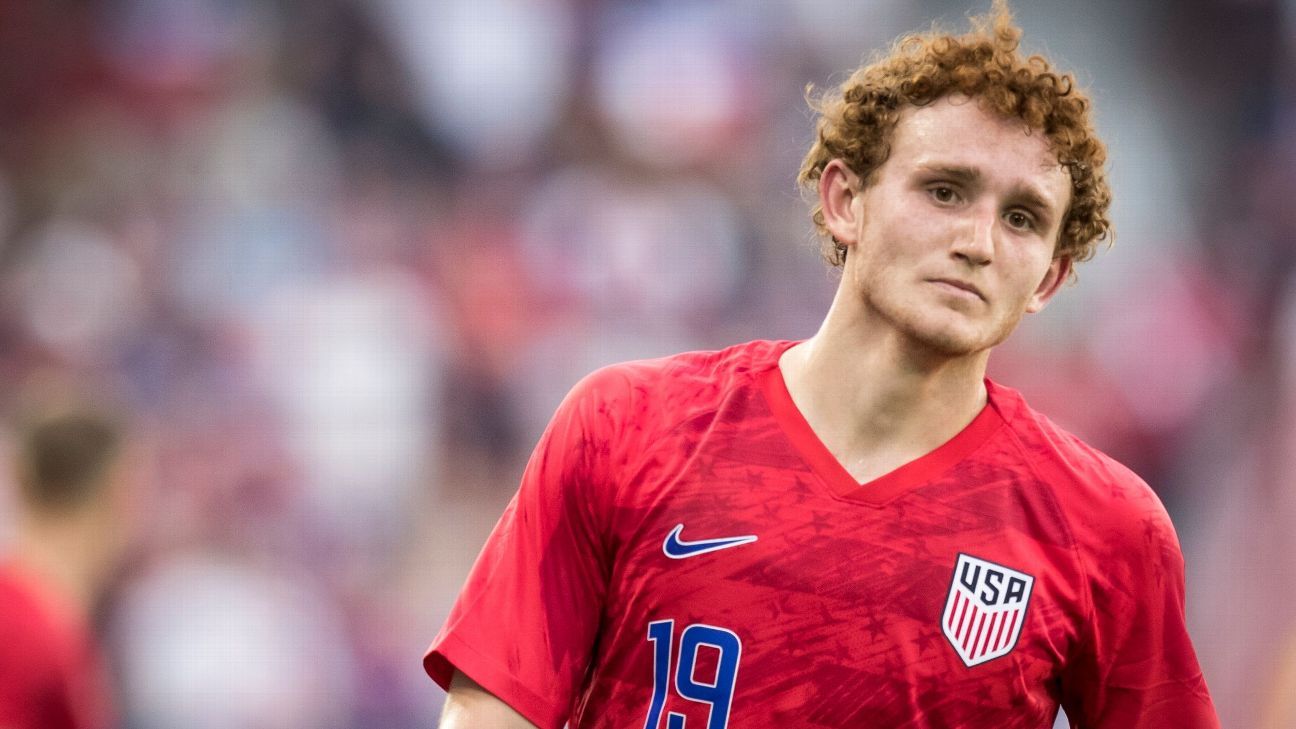
WASHINGTON, D.C. -- As Josh Sargent maneuvered through the postmatch mixed zone Wednesday night, the look of disappointment on his face was clear. He had nearly equalized for the U.S. late in the 1-0 friendly defeat to Jamaica, only to be denied by a sharp save from Jamaica goalkeeper Andre Blake. It capped off what had been a difficult night for him, as well as his U.S. teammates.
"It was tough to get on the ball sometimes, and it was a difficult game it seems like for us to get a rhythm," he said. "It was a little frustrating for me, but we have to learn from this experience and move on."
Alas, a tough night for the forward was about to get worse. U.S. manager Gregg Berhalter told Sargent later that night that there was no room for the 19-year-old on the 23-player Gold Cup roster.
- When is the CONCACAF Gold Cup?
- Full Gold Cup fixtures schedule
The decision was easily the most perplexing that Berhalter made. Heading into late spring, the biggest decision surrounding Sargent was whether he would go to the FIFA Under-20 World Cup or stay with the senior team for the Gold Cup. The least likely scenario -- or so it appeared -- was one in which he did neither.
Yet, that is precisely what happened, and Berhalter was left to explain himself on a conference call with reporters. To hear the U.S. manager tell it, deciding to leave Sargent at home was the toughest call he had to make. And what sealed Sargent's fate wasn't so much what he did on the field or in training, but a hamstring injury to Sebastian Lletget that caused the Galaxy midfielder to be left off the roster, as well. Lletget's versatility allows him to play any one of three midfield roles, be it as a deep-lying midfielder, an attacking midfielder or out wide. That forced Berhalter to select multiple players to fill in for what Lletget is capable of individually.
"When [Lletget] got injured, it put a wrench in the plans a little bit, and we didn't feel we could afford to carry three strikers on the roster anymore," Berhalter said.
So Sargent was the odd forward out, with Jozy Altidore and Gyasi Zardes selected instead, and Berhalter was clear in his reasoning as to why.
"It's a simple reason, and it's that we think they're ahead of [Sargent] right now," said the U.S. manager. "We had to do what we felt was best for the team right now, and that's the decision we made."
Altidore has the experience and know-how, and Zardes is more adept at stretching defenses with his speed.
As for whether Sargent should have been placed with the U20s, Berhalter instead sought to praise what that U.S. side has done without Sargent. Tab Ramos' outfit is now into the quarterfinals, and forward Sebastian Soto has stepped in nicely; his four goals are presently tied for the second-most at the tournament.
"I think with Josh in that team, we wouldn't have the opportunity to see someone like Soto perform, and he's flourished in that," said Berhalter.
In many respects, Berhalter was being consistent. He is very much a system man, and the players he selected seem able to plug in to his approach. The U.S. manager has also put a premium on players getting time with their clubs; as impressive as it is for a 19-year-old to be in the first-team of a Bundesliga squad, the reality is that after bagging a pair of goals for Werder in December, Sargent's playing time eroded, and he was barely called upon the last two months of the season. He is still a player with just 10 first-team appearances to his name. It's not to say the forward won't ever make the next step. He just failed to do so now, and it is very much the present that Berhalter is thinking about.
"We have to remember that he's 19 years old, and that he has a bright future in front of him," Berhalter said about Sargent. "When I talked to him and gave him the news, one thing I mentioned was that he's going to be the striker for the national team in the future. We're sure of that. He's got a great skill set. Unfortunately, he didn't carry that momentum from Werder Bremen in the second half of the season. He wasn't able to play as much as he could have. He lacked a little sharpness. But Josh is a top striker, and he's going to have a lot of opportunities in the future."
All that said, Sargent's omission is certainly puzzling. Bringing him to the Gold Cup seemed to make sense given that the U.S. seems to have ample cover at the wing positions through Paul Arriola, Jordan Morris, Jonathan Lewis, and Tyler Boyd, who recently had his one-time switch from New Zealand approved. Fellow newcomer Duane Holmes is also certainly capable of filling in out wide, as well. Given Sargent's upside, there seemed to be more to gain by including him rather than leaving him at home.
In terms of damage that has been done to Sargent, that is bound to be minimal. There is no question he would have benefited from being at the Gold Cup. Even if his playing time was limited, it would have given him more experience, which would have helped him heading into preseason next year. But it is the daily work at Bremen that will ultimately determine just how much he progresses.
It's just unfortunate that U.S. fans will have to wait a bit longer to see Sargent perform again at international level.
Tagged under
England look to iron out flaws against spirited Bangladesh
Published in
Cricket
Friday, 07 June 2019 07:30

Big Picture
Possibly not for the first time in this marathon round-robin stage, England have met with a Dad's Army moment. The phrase "Don't panic!" of course cannot be uttered without giving the underlying impression that panic is precisely what's in store, though Joe Root's words in the aftermath of defeat to Pakistan were eminently sensible and (presumably) not delivered in a reedy Clive Dunn warble.
There is common acceptance that each of the four semi-finalists will have to overcome a few losses on the way - though Eoin Morgan would surely have preferred England's first not to have come inside the opening couple of games. The fielding that backed up their efforts with the ball so strongly against South Africa was well below par at Trent Bridge, and in a 14-run defeat was probably the decisive factor, even if England have come to back their batting to overhaul whatever target gets put in their way.
Their next opponents, Bangladesh, have shown they are not to be trifled with, and will be cheered on by a partisan following, too - something that seemed to unsettle England in Nottingham. While Cardiff has been a relatively successful venue for England - almost in spite of the silent W in the ECB - it also holds good memories for Bangladesh as the scene of their famous mugging of Australia in 2005, and there is every chance that plush tigers will outnumber lions in the stands.
Cardiff was also where England's Champions Trophy hopes came to grief in 2017, so they have plenty of reasons to stay focused on the job in hand. Centuries for Root and Jos Buttler against Pakistan will encourage England to stick to their batting guns, given they may well get another chance to overwrite Ireland's Bengaluru 2011 heroics for the record World Cup chase. Adil Rashid's indifferent form, perhaps exacerbated by a long-term shoulder problem, may be causing some anxiety, though.
For Bangladesh, defeat to New Zealand was ultimately an agonising affair, but they go into this game with as many points as the hosts and under no great pressure against one of the favourites. The top order has been in relatively good form, although they might need to find more wicket-taking options in the middle overs if they are to contain as aggressive an opponent as England.
After their painful meeting in Adelaide four years ago, England will know not to underestimate Mashrafe Mortaza's side. In fact, in both of the previous World Cups, Bangladesh have knocked over England during the group stage - should they make it three from three, then Morgan might have to start considering panic as the least-bad option.
Form guide
England LWWWW (last five completed matches, most recent first)
Bangladesh LWWWW
In the spotlight
After being hailed for his fielding in England's opener, Jason Roy experienced the flip side in Nottingham - his drop of Mohammad Hafeez the most notable blip in a malfunctioning effort. Pakistan then became the second team in succession to open the bowling with a legspinner based on Roy's perceived weakness: a theory that will remain intact after his lbw attempting to sweep Shadab Khan's seventh ball. Man of the Series against Pakistan during England's build-up, Roy made a momentum-shifting fifty despite the attentions of Imran Tahir at The Oval but could be targeted by Bangladesh's spinners once again.
There is no doubt about the leadership skills of Mashrafe Mortaza, Bangladesh's most successful ODI captain, but there might be growing scrutiny over his role with the ball. A lack of penetration cost Bangladesh against New Zealand, a match which extended a dry run for Mashrafe with the ball - he has gone wicketless in six of his nine matches in 2019, and not bowled his full quota overs on each of those occasions, too. However, he has a decent career record against this England side, and has nine wickets in four ODIs against them since the 2015 World Cup.
Team news
England tend to stick with the same players in defeat, almost as a sign of faith, although there is a chance the ground dimensions in Cardiff will instigate at least one change. With short, straight boundaries to defend, Liam Plunkett could be in line for a recall, possibly at the expense of Rashid, who was fared badly at Trent Bridge after seeing Hafeez dropped in his second over.
England: (probable) 1 Jason Roy, 2 Jonny Bairstow, 3 Joe Root, 4 Eoin Morgan (capt), 5 Ben Stokes, 6 Jos Buttler (wk), 7 Moeen Ali, 8 Chris Woakes, 9 Liam Plunkett, 10 Jofra Archer, 11 Mark Wood
Bangladesh have gone well so far, and while Sabbir Rahman might back his chances after Mosaddek Hossain's returns of 26 and 11 so far in the lower middle-order, he might just have to wait a bit longer.
Bangladesh: (probable) 1 Tamim Iqbal, 2 Soumya Sarkar, 3 Shakib Al Hasan, 4 Mushfiqur Rahman (wk), 5 Mohammad Mithun, 6 Mahmudullah, 7 Mosaddek Hossain, 8 Mohammad Saifuddin, 9 Mehidy Hasan, 10 Mashrafe Mortaza, 11 Mustafizur Rahman
Pitch and conditions
The Cardiff deck was seamer-friendly in the opening two games, it has also tended to be on the slow side, though the boundaries - the straight ones are especially short - are hard to defend and England piled up 342 for 8 there against Australia last summer. Rain has forced the pitch to be under covers the last couple of days too, so that could have a bearing on the way it plays.
Strategy punts
Another reason England might want to add a pacer instead of Rashid in their XI is that Bangladesh's most consistent middle-order batsman, Mushfiqur Rahim, has been outstanding against spin in recent times.
Chris Woakes' form with the new ball has been something of a concern for England and Bangladesh's openers might look to target him. His economy in 2019 is 7.0 from nine matches so far, and a rate of 6.5 in the Powerplay - where he has taken seven wickets at 38.9 - is by far the worst of his career, year on year.
Those stats might suggest England should try opening the bowling with Jofra Archer and Mark Wood instead. The importance of getting Tamim Iqbal or Soumya Sarkar early is clear: since the 2017 Champions Trophy, Bangladesh have won 80% of matches in which Tamim has reached 50, and 100% when Soumya does so.
Stats and trivia
England's defeat at Trent Bridge was their first while chasing at home since 2015, when they lost to Australia at Lord's.
Bangladesh have won both of their previous ODIs in Cardiff, beating New Zealand during the 2017 Champions Trophy and Australia in the 2005 tri-series with England.
The 224-run partnership between Shakib and Mahmadullah in that New Zealand game remains a Bangladesh record for the fifth-wicket in ODIs.
Quotes
"Bangladesh will open with spin definitely. It's just another challenge the two guys have been presented with. It's like anything: when the balls swings, it's a new challenge, when guys bowl short, it's a new challenge. Mystery spin is a new challenge. I'm sure they'll kick on."
England captain Eoin Morgan expects his openers to handle the Bangladesh spinners well
"For us, we have been beating them the last two World Cups. It doesn't mean that we will make it happen again. Obviously there is the chance, and for that, we have to play at our best."
Bangladesh captain Mashrafe Mortaza on the possibility of a hat-trick of World Cup wins over England
Tagged under
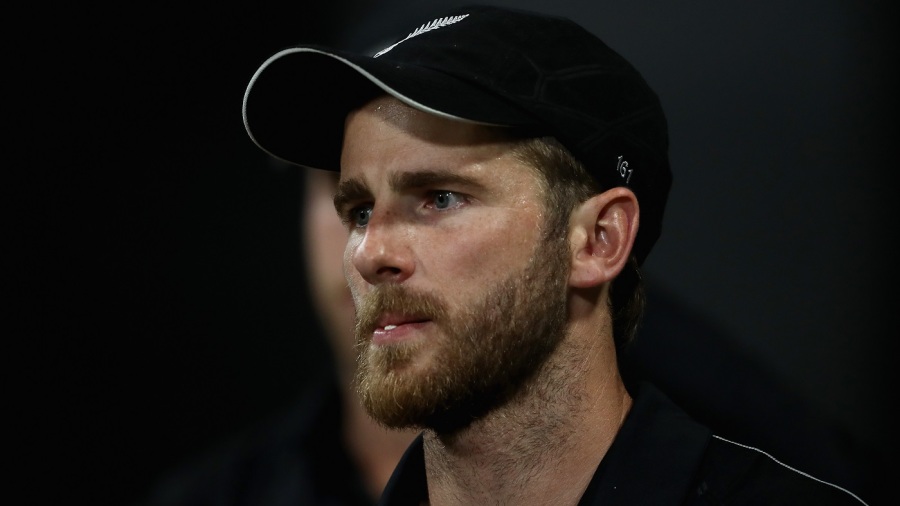
Big Picture
The venue for the New Zealand-Afghanistan clash elicits as much intrigue as the match-up itself. Taunton, once the home of Ian Botham, Viv Richards, Joel Garner, the late Peter Roebuck, and in more recent times Marcus Trescothick and Jos Buttler, is set to make an international return since the India-Sri Lanka clash in 1999, remembered best for Sourav Ganguly and Rahul Dravid' 318-run second wicket stand. If 373 was possible back then, is 500 on the cards now?
It's unlikely either team would allow such fantasies to take hold of them, and in any case the bowling attacks on view aren't comparable to the pedestrian one that conceded 373. Afghanistan quicks took a while to find their lengths against Sri Lanka in helpful conditions in Cardiff, but were a handful once they did. The spinners, especially Mohammad Nabi, showed that the ball can do in plenty the air, even before it pitches and turns, to deceive batsmen. With New Zealand's gung-ho approach against spin in their narrow win over Bangladesh seemingly stemming from insecurity, Afghanistan would be salivating at the prospect of having a crack at them.
New Zealand themselves have a wily operator in Mitchell Santner but they'd be keener to unleash a combination of swing and searing pace at their opponents' top order that has so far shown a frailty that could make life against top sides miserable. Najibullah Zadran apart, not one of their top seven has looked convincing so far, not even their leading scorer since the start of 2015, Rahmat Shah. No wonder they find themselves at the bottom of the pile, just above South Africa.
Much like the Afghanistan spinners took the pitch out of the equation in Cardiff, New Zealand quicks were equally adept in adjusting to the slowish Oval surface. A big part of their plan B when the pitch refused to assist them was Lockie Ferguson's short ball barrage with a leg gully in place. The temptation to employ that tactic may be even greater against a brittle Afghanistan batting unit.
Form guide
Afghanistan LLWLW (completed matches, most recent first)
New Zealand WWWWW
In the spotlight
Since returning to the side in January this year, James Neesham has looked very good. But the problem is that he has squandered both opportunities of steering New Zealand home from a tight corner in this period, once against India in Wellington when he was run-out in absent minded manner, and against Bangladesh last match when he cracked under pressure, lofting Mosaddek Hossain straight to long-off when singles could have done the trick. New Zealand need their premier allrounder to show better match-awareness, especially if they are to include Ish Sodhi, which will mean playing a batsman short.
Wickets have dried up for Mujeeb ur Rahman lately. He has taken just nine in the last ten matches as compared to the 43 in 22 before that. Usually their designated opening bowler, the match against Sri Lanka was only the fourth time Mujeeb did not take the new ball in his ODI career, and the conditions had plenty to do with that. He was also taken apart for 45 in just 4.5 overs by Australia in the tournament opener. Conditions are unlikely to be favourable in Taunton either but Afghanistan might just persist with him given the opposition they are up against and hope that he finds form.
Team news
Kane Williamson had said that Tim Southee was recovering well but it's unlikely he'd make the XI now, with Matt Henry bowling as well as he is. New Zealand, however, may consider the inclusion of Sodhi depending on conditions in Taunton. If that happens, Colin de Grandhomme will most likely have to make way.
New Zealand (probable): 1 Martin Guptill, 2 Colin Munro, 3 Kane Williamson (capt), 4 Ross Taylor, 5 Tom Latham (wk), 6 James Neesham, 7 Colin de Grandhomme/Ish Sodhi, 8 Mitchell Santner, 9 Matt Henry, 10 Lockie Ferguson, 11 Trent Boult
Afghanistan have lost Mohammad Shahzad to injury and are fretting over the fitness of Asghar Afghan as well. They have another decision to make outside of that: roping in an extra seamer in Aftab Alam instead of Mujeeb, something they probably rued in Cardiff.
Afghanistan (probable): 1 Hazratullah Zazai, 2 Rahmat Shah, 3 Hashmatullah Shahidi, 4 Najibullah Zadran, 5 Mohammad Nabi, 6 Gulbadin Naib (capt) 7 Ikram Alikhil (wk), 8 Rashid Khan, 9 Mujeeb-ur-Rahman/Aftab Alam , 10 Hamid Hassan, 11 Dawlat Zadran
Pitch and conditions
Generally a high scoring venue with particularly short straight boundaries, Taunton has seen an average first innings score of 299 in the last five completed List-A matches. Teams batting first have won three of these, and pacers have tended to the bulk of the bowling across those ten innings, delivering 287.2 overs as opposed to just 102 from the spinners. Naturally then more wickets have fallen to pace but its also been marginally more expensive - 6.4 runs per over as compared to the 5.8 conceded by spin. With a couple of morning showers expected, bowling first might be the best bet.
Strategy punt
Nearly 50% of Ferguson's deliveries are either short or back of a length or short and Afghanistan's batsmen don't really like that. Even the best of them - Rahmat (average 12.5), Hashmatullah Shahidi (14.6) and Najibullah (16) - have been susceptible.
Williamson has faced spin bowling in eight innings this year and he has lost his wicket to them six times. Enough there to excite Rashid Khan, Nabi and Mujeeb.
Stats and trivia
Shahidi needs 113 more for 1000 Runs in ODIs
Martin Guptill needs 93 more for 1000 Runs in World Cups
Tagged under
BCCI asks ICC for 'flexibility' on Dhoni gloves but says will go by the rule
Published in
Cricket
Friday, 07 June 2019 06:46
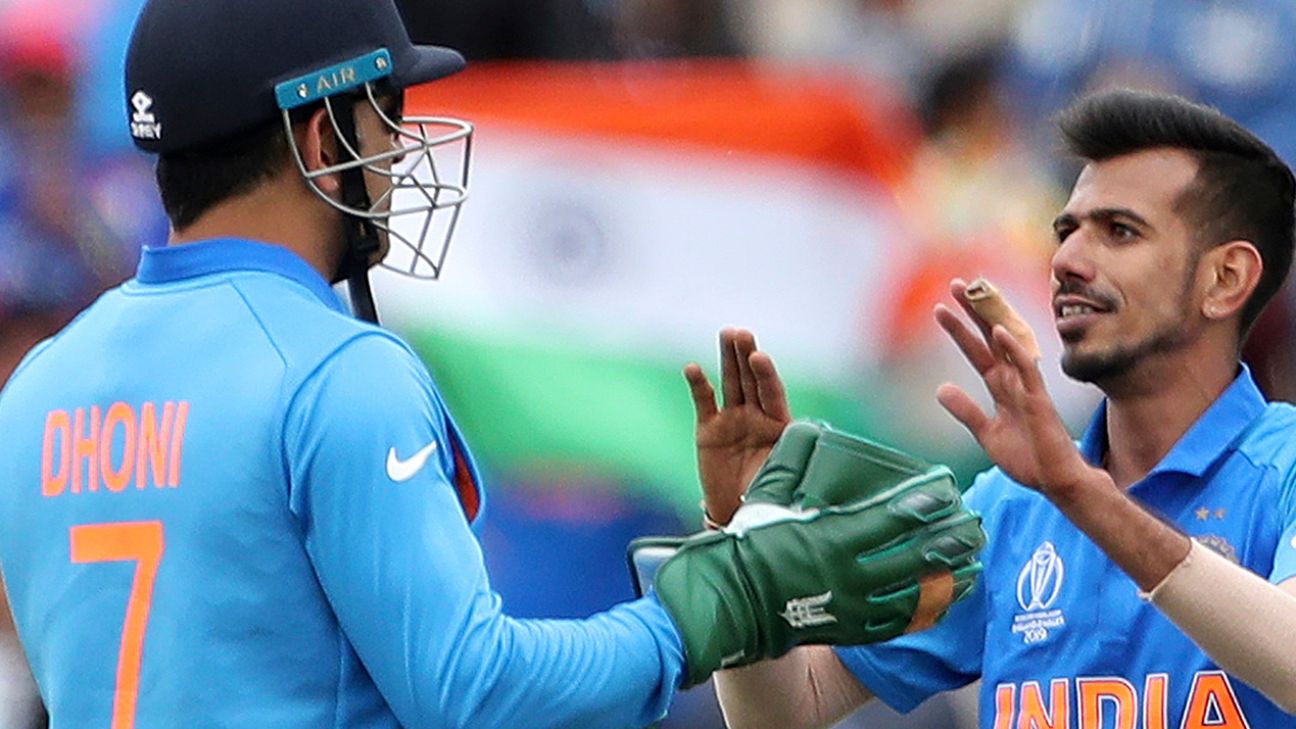
The BCCI has asked the ICC to show "flexibility" with regard to the dagger insignia on MS Dhoni's wicketkeeping gloves, but will not escalate the matter if the ICC insists otherwise.
The gloves, which Dhoni wore for India's tournament opener against South Africa on June 5, were deemed by the ICC to be in breach of tournament's rules, which clearly say that only the manufacturer's logo is allowed on them.
The issue is an insignia of a dagger on the back of the green gloves. Dhoni is an honorary lieutenant-colonel in the Parachute Regiment of the Indian Territorial Army. The dagger is the emblem of the regiment.
Though the matter gained traction in India and even prompted the intervention of the country's sports minister, the BCCI called it a "non-issue". "We will play the game by the rules of the ICC in letter and spirit," Vinod Rai, the chairman of the BCCI's Committee of Administrators told ESPNcricinfo. "If there is a specific norm that has to be followed, we will not break that norm. However, if there is any flexibility available, we have sought permission for the ICC to allow the player to wear the gloves."
The matter was discussed in the CoA meeting held in Mumbai on Friday, which was attended by Rai's two other colleagues - Diana Edulji and Ravindra Thodge - as well as the BCCI chief executive officer Rahul Johri.
The ICC's clothing and equipment regulations for the World Cup has a section on keeping gloves. The diagram shows that two manufacturer's identifications are allowed on the back of each glove. "No visible logos permitted other than those identified in the diagram," the note accompanying the illustration says.
According to Rai, the insignia is "neither political, nor commercial, nor military". "And it is not the paramilitary regimental dagger that is embossed on his gloves," he said. "I am told ICC has specific rules pertaining to the logos on the gloves of the wicketkeeper. If there is rule as specific as that we will 100% conform to the ICC rules. We don't propose to escalate this non-issue."
The matter has been complicated by the Indian government's support for the BCCI's stand. India's sports minister Kiren Rijiju told the news agency ANI: "The government doesn't intervene in affairs of sports bodies. But when the issue is related to the country's sentiments, then the interest of the nation has to be kept in mind. I would like to request BCCI to take up the matter with ICC."
ESPNcricinfo understands that if the ICC turns down the BCCI request, Dhoni is likely to continue to wear the same gloves but cover the insignia with a tape.
While the ICC is yet to formally respond to the BCCI, it is believed that it will not step back on its stance.
Tagged under
Former chief election commissioner appointed to oversee BCCI elections
Published in
Cricket
Friday, 07 June 2019 07:58
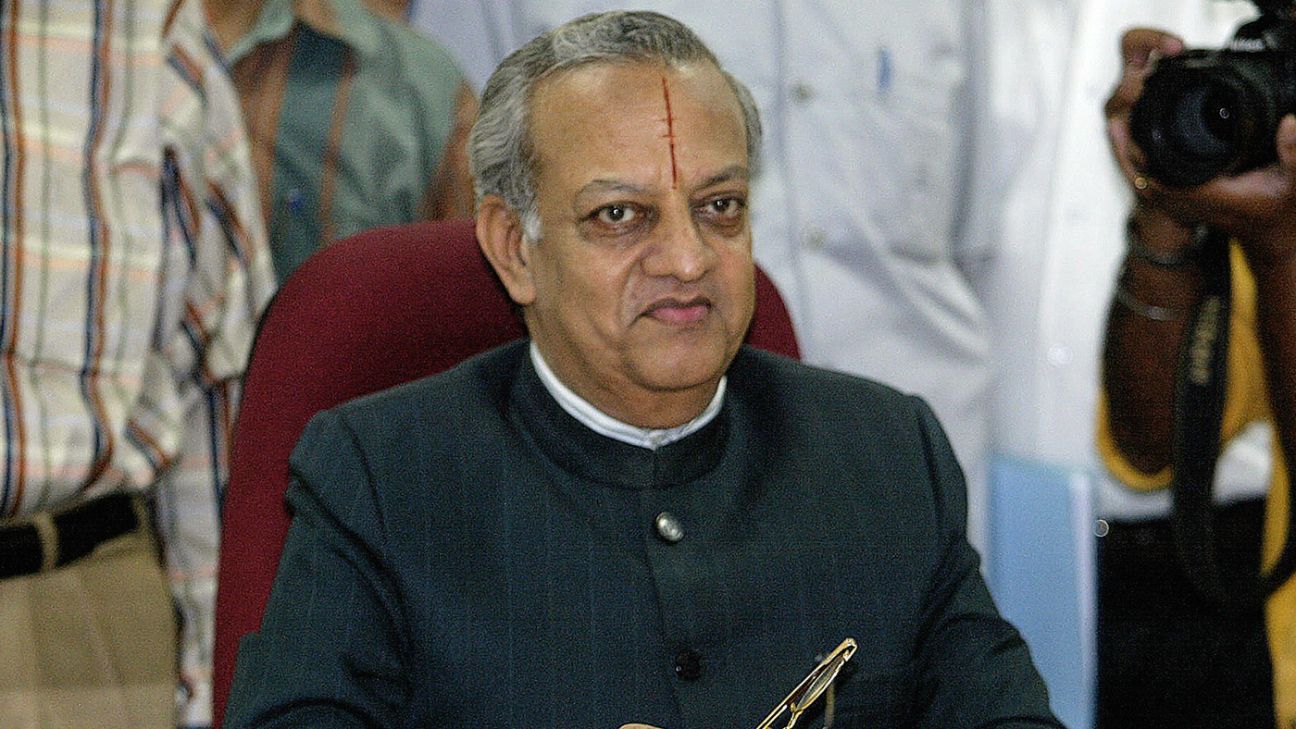
The BCCi's Committee of Administrators has appointed the former Chief Election Commissioner (CEC) of India, N Gopalaswami, to take charge of the board's upcoming elections. He has been named electoral officer for the electoral process, which is set to conclude with the polling on October 22.
Gopalaswami had worked as CEC between 2006 and 2009.
The BCCI is set for elections after a prolonged tussle over the implementation of the Lodha Committee's reforms, which was part of the fallout of the 2013 IPL corruption scandal. While the BCCI and its members - the state associations - wrangled over which Lodha recommendations to implement and in what form, the court had appointed a Committee of Administrators (CoA) to oversee the running of the Indian board in early 2017. The CoA supervised the BCCI for nearly 30 months before it announced in May that the board was ready to go ahead with elections.
Gopalaswami will perform his role as electoral officer for the BCCI out of the board's headquarters in Mumbai. He has till June 30 to prepare the electoral protocol for the elections, in consultation with the CoA, and communicate it to the state associations. Then, in the next step of the process, the states will need to appoint electoral officers of their own and hold their elections by September 14 at the latest. The states will then send the BCCI their list of representatives, and the list of candidates for the BCCI's election will need to be finalised by September 30.
It remains to be seen which of the current lot of office-bearers at the state and BCCI levels are eligible to contest the elections, given the cap on number of years in office and cooling-off period introduced by the Lodha Committee. As per the new rules, an office-bearer can work for 18 years as long as the cooling-off period of three years, which comes into play after two consecutive terms of three years each, is exercised.
Tagged under
Persistent rain forces Pakistan v Sri Lanka washout in Bristol
Published in
Cricket
Friday, 07 June 2019 08:25
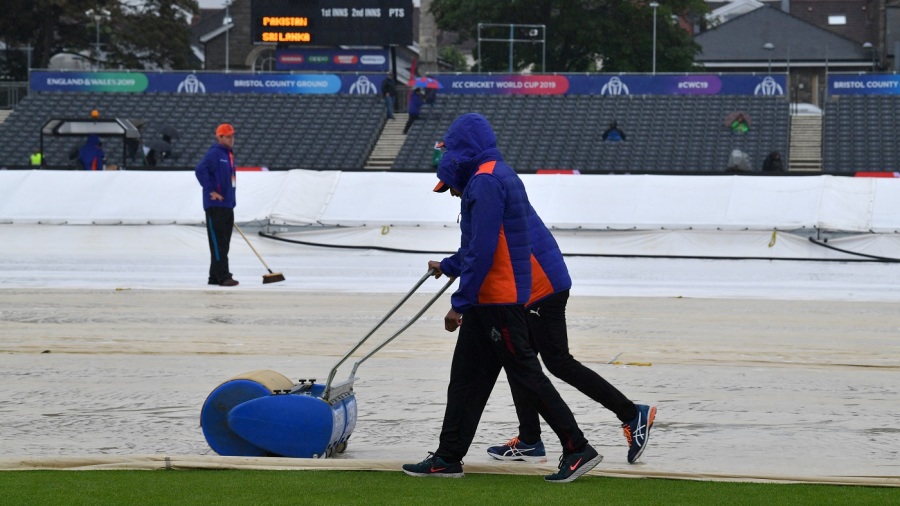
Pakistan v Sri Lanka Match abandoned
As it happened
Persistent rain and a damp outfield forced the first washout of the 2019 World Cup as the game between Pakistan and Sri Lanka was abandoned without a ball being bowled. Although the rain wasn't heavy, it was enough to force a delay of more than five hours and render several parts of the outfield too wet to play on.
Umpire Ian Gould and Nigel Llong made the final call at 3.45pm local time. The teams split points, which ensured Sri Lanka moved to third on the table by virtue of a superior run-rate (-1.517). Pakistan, like Sri Lanka, have three points from as many games, but they only have a net run-rate of -2.412.
The (no) result means Sri Lanka will have to wait even longer to break their World Cup duck against Pakistan. The head-to-head reads 7-0.
Pakistan will now enjoy a five-day break before facing Australia in Taunton while Sri Lanka will run into Bangladesh on June 11 in Bristol.
Tagged under
Barty, Vondrousova advance to French Open final
Published in
Breaking News
Friday, 07 June 2019 05:56
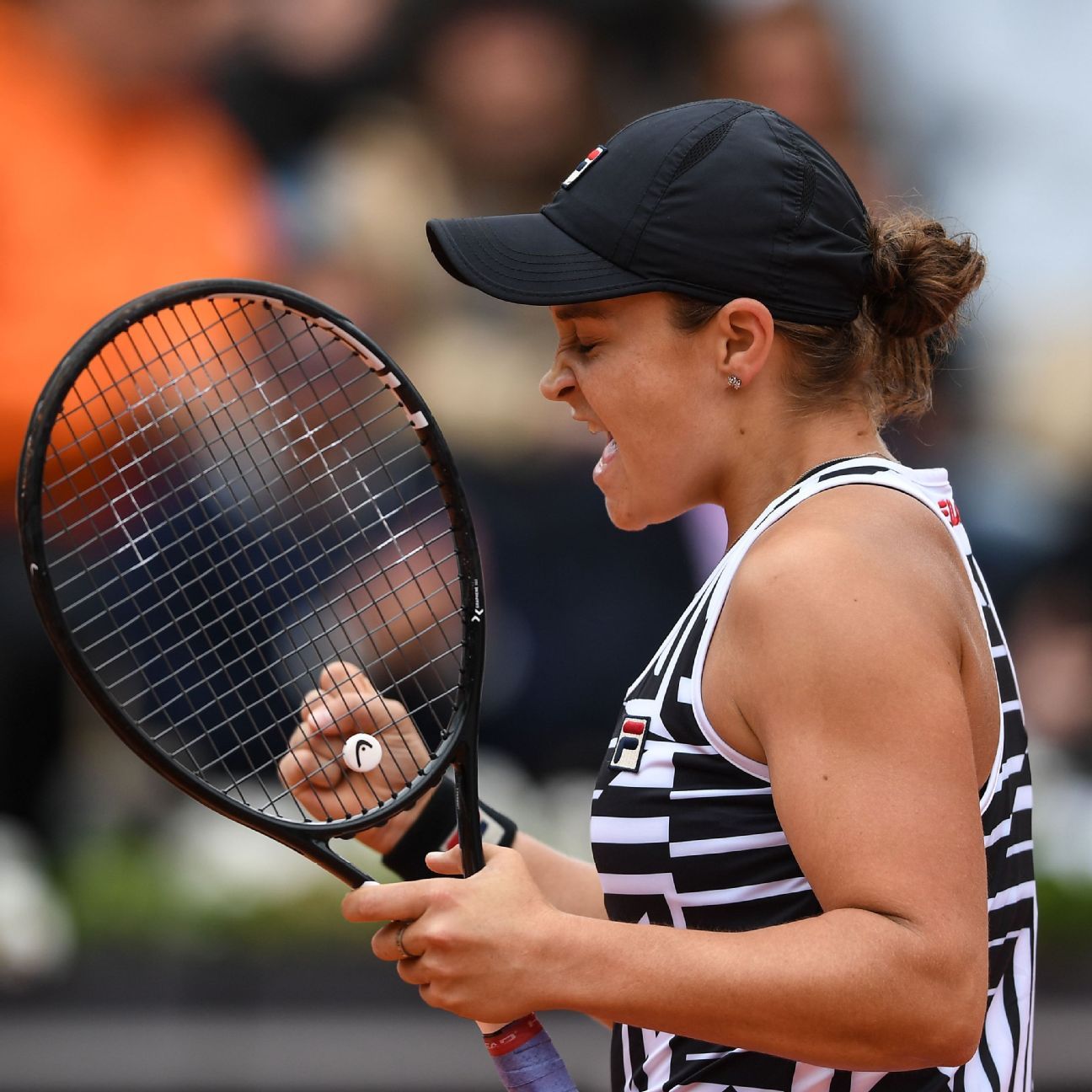
PARIS -- Ashleigh Barty won 17 of the initial 18 points in her French Open semifinal against 17-year-old Amanda Anisimova to lead 5-0 after 12 minutes -- and yet somehow lost that set.
Barty then lost the initial 12 points of the second set to trail 3-0 -- and yet somehow won it.
So it was fitting, perhaps, that Barty not only fell behind by a break in the deciding set before coming back to take control, but also that she required a half-dozen match points to finally close things out.
Barty, an Australian seeded No. 8, reached her first Grand Slam final by steadying herself and emerging to beat Anisimova, an American ranked 51st, by a score of 6-7 (4), 6-3, 6-3 in a topsy-turvy contest on a windy, rainy Friday.
"I played some really good tennis. I played some pretty awful tennis," said Barty, a 23-year-old who took nearly two years away from the sport starting in 2014 to switch to cricket before returning to the tour.
"I'm just proud of myself the way I was able to fight and scrap and hang in there and find a way," she said, "when I kind of threw away that first set."
After ending Anisimova's breakthrough run, Barty now takes on another unseeded teen for the championship Saturday: 19-year-old Marketa Vondrousova of the Czech Republic.
Vondrousova, ranked just 38th, reached her first major final by overcoming a shaky start in each set and eliminating No. 26 Johanna Konta of Britain 7-5, 7-6 (2).
Vondrousova has not dropped a set in the tournament and can become the first teenager to win the French Open since Iva Majoli in 1997.
"Best week of my life so far," Vondrousova said. "I'm just very happy with everything."
That was Barty's mood at the outset of her semifinal, which then took quite a turn. Several, actually.
With Anisimova serving down 0-5, 15-40, Barty held two sets points. From there, Anisimova began playing the way she did in her quarterfinal upset of defending champion Simona Halep -- and Barty suddenly lost her way. Anisimova took six consecutive games. In the tiebreaker, more of the same: Barty went up 4-2, but Anisimova collected the last five points.
"Pretty tough to come to terms with," Barty said of her first-set collapse. "Probably never done that to myself before."
When Anisimova claimed that set with a forehand winner, she raised both arms aloft, looking like someone who had just won the entire match. Not quite, kid.
Still, that momentum carried her to a lead in the second set, before Barty went on a seven-game run of her own to go ahead 1-0 in the third.
Not ready to quit, Anisimova broke to lead 2-1 and had just fended off three break points when, at deuce, her coach signaled from the stands that play should stop because the rain picked up. Anisimova paused while the chair umpire climbed down to check whether the lines were slippery, but determined play could continue.
The little pause might have been enough to break Anisimova's concentration. Sure played as if it did.
Barty broke there and went on a four-game burst. As the match slipped away, Anisimova had distress written all over her face. After one lost point, she clutched her racket against her chest like a pillow. After another, she balled up her right hand into a fist and landed a punch on each thigh.
"She just outplayed me, basically," Anisimova said.
Vondrousova did not start her major semifinal debut well, either. She double-faulted twice in the opening game while ceding the first 10 points, and faced three set points down 5-3.
On Konta's first chance, she badly missed a swinging forehand volley.
"That's what I would do nine times out of 10. And probably nine times out of 10, it probably would go in," Konta said. "I definitely don't regret anything."
Perhaps, but she never recovered in that set. And in the second, Konta again blew a 5-3 edge.
Konta, the only member of the women's final four with previous Grand Slam semifinal experience, is now 0-3 in that round at majors. This time, she was undone by Vondrousova, a left-hander who appears to possess every shot there is, with an enviable variety of speeds and angles.
"She's a tricky player," Konta said. "That's what she does well."
The semifinals were played in difficult conditions, in drizzle, wind that reached 12 mph (20 kph) and temperatures of about 60 degrees (15 Celsius). The matches also were played at unusual courts -- scheduling that was criticized by women's tennis tour CEO Steve Simon as "unfair and inappropriate."
Normally, all French Open singles semifinals are held in Court Philippe Chatrier, with the women on Thursday and men on Friday. But after a full day of play was washed out by rain Wednesday, tournament officials shuffled the schedule. The women's semifinals were held simultaneously at the second- and third-biggest courts at Roland Garros instead of the main stadium, starting just after 11 a.m.
Asked whether this felt like a major semifinal, Konta replied: "I mean, in terms of the surrounding and the occasion, probably not. ... In terms of the match itself, probably."
Tagged under
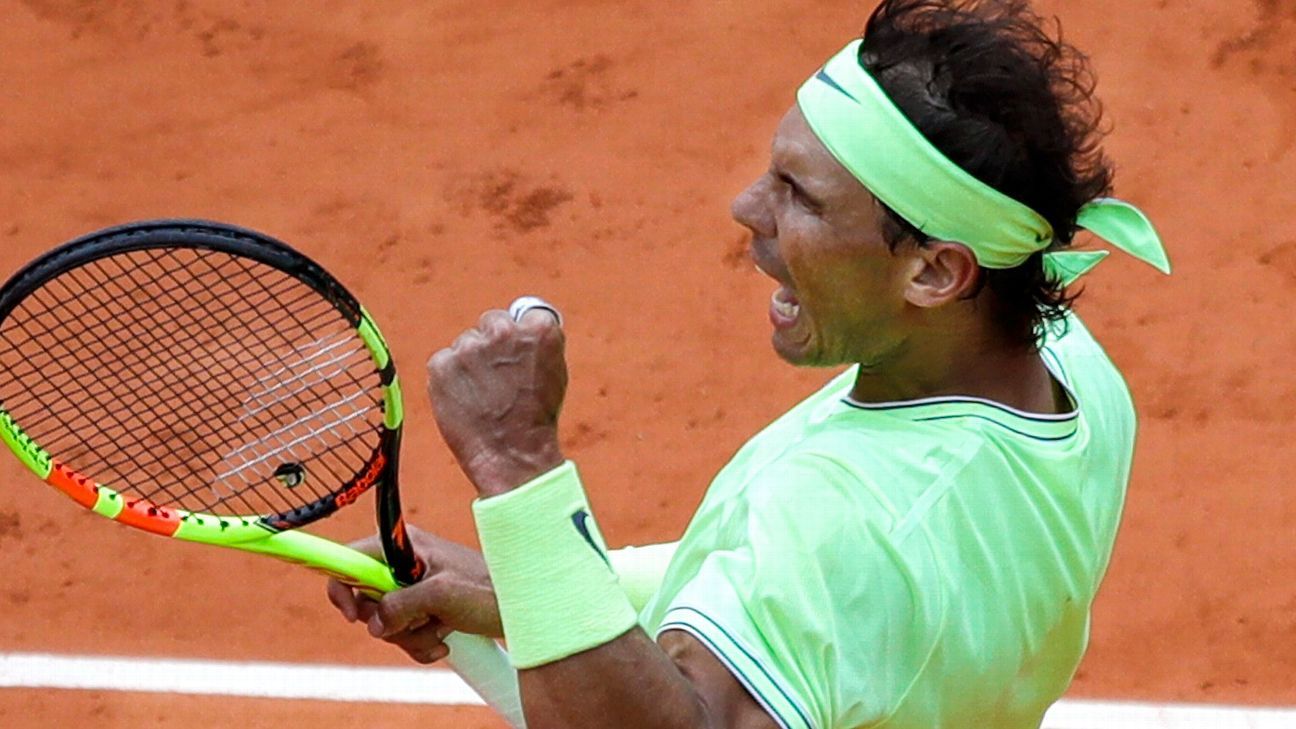
PARIS -- Rafael Nadal made quick work of Roger Federer in their first French Open meeting since 2011, beating his rival 6-3, 6-4, 6-2 Friday in strong wind to reach his 12th final at Roland Garros.
Nadal has never lost a semifinal at the clay-court Grand Slam tournament. Never lost a final, either.
And he's never lost to Federer in Paris, improving to 6-0. Overall, Nadal leads their series 24-15. Federer had won their past five meetings, but those were all on hard courts.
It's a whole different task to take on Nadal on clay, in general, and at the French Open, in particular, where he's one victory from a 12th championship. That total would be more than any man or woman has won at any of the Grand Slam tournaments.
In Sunday's final, the No. 2-seeded Nadal will take on No. 1 Novak Djokovic or No. 4 Dominic Thiem.
This was the first time since 2011 the four top-seeded men were in the semifinals at Roland Garros.
Like so many times before, Nadal's topspin-heavy lefty forehand, relentless ball chasing and return game gave Federer fits. The generally stoic Federer was so frustrated that he smacked a tennis ball toward the stands after getting broken to trail 2-1 in the third set.
It was soon over.
Federer, who was playing at Roland Garros for the first time since 2015, hadn't lost a set through five victories over the past two weeks. With an aggressive, head-to-the-net style, he had been broken only four times total by those opponents.
Nadal easily exceeded that in a span of three sets across less than two-plus hours, winning six of 13 return games.
The 37-year-old Federer, whose 20 Grand Slam titles are a record for a man, was serenaded off the court by spectators' chants of his first name. He raised his right arm for a quick wave as he walked away -- perhaps for the final time. He missed the tournament in 2016 with a bad back, then skipped it the next two years to prepare for grass and hard courts.
He looked quite good in his return until running into his old nemesis.
Tagged under
Five moves that put Toronto into the NBA Finals
Published in
Breaking News
Friday, 07 June 2019 06:24
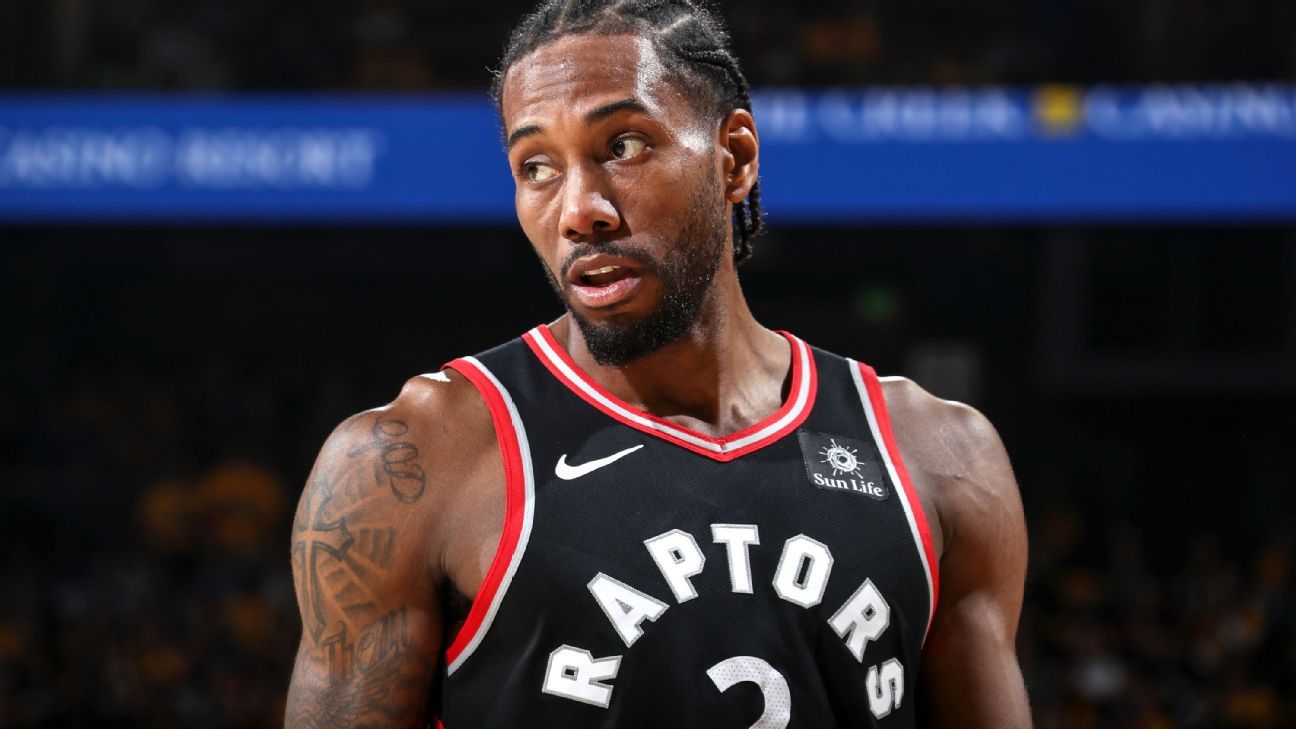
OAKLAND, Calif. -- Houston Rockets general manager Daryl Morey popularized the 5% theory. It goes something like this: If you believe your team has even a 5% chance of winning the championship, then you should go all in to try to make it happen. Morey explained the 5% theory to Grantland's Zach Lowe back in 2012.
A year ago, the Toronto Raptors weren't even a 5% theory team. The oddsmakers had them as a 2.5% team. At one time last summer, the Raptors were 40-1 to win the NBA title.
Then they traded for Kawhi Leonard, traded for Danny Green, traded for Marc Gasol, got an explosive breakout from Pascal Siakam, saw the birth of a child give Fred VanVleet superpowers and had the friendliest rim bounce in history.
Add in a strained calf, a pulled hamstring, some torn cartilage for the Golden State Warriors, and the Raptors are two wins from giving the 5% theory a new name: the Raptors Rule.
It didn't happen overnight, and it isn't just about the Kawhi Leonard blockbuster that GM Masai Ujiri pulled. It was a long road to get to that 5%.
Here's a look at some moments that put them on this serendipitous ride:
Lakers laid people off
Alex McKechnie was one of North America's most respected athletic trainers and scientists. NBA players pilgrimaged for years to visit him in Vancouver when they had injuries or needed rehab. For example, he's credited with helping save Shaquille O'Neal's prime years by treating O'Neal's abdominal injuries in the late 1990s. O'Neal was so effusive that the Los Angeles Lakers hired the Scottish native, and he was with them for five titles between 1999 and 2011.
But when the NBA lockout hit in 2011, the Lakers allowed numerous staff members' contracts to expire so they didn't have to pay them during the lockout. The richest team in the league then lost its prized trainer when the Raptors, then led by general manager Bryan Colangelo, swooped in and hired McKechnie after the Lakers left him unemployed.
Now, seven years later and with more than 40 years' experience in the field, McKechnie was the point man when the Raptors took on the challenge of caring for Leonard. Providing good care for Leonard and building trust with him was absolutely vital after those bonds eroded in San Antonio.
Nuggets controlled costs
Denver Nuggets owner Stan Kroenke -- his son Josh is vice chairman and runs the team now -- studied at the side of his father-in-law for decades. He became a self-made billionaire in doing so and one of the most successful sports team owners on the planet.
His father-in-law happened to be Sam Walton, the founder of Walmart. Walton believed, almost above all else, that controlling costs is vital to beating competition and growing business. Kroenke has operated his sports teams this way whenever possible.
In 2013, when the Raptors went looking for a GM, then-CEO Tim Leiweke was obsessed with getting Ujiri away from the Nuggets, where he had shown great promise. After getting denied permission to interview him several times, Leiweke finally secured it and offered Ujiri a multimillion-dollar-per-season raise. The Nuggets, controlling costs, declined to match, and he left.
Ujiri went to Toronto, and the team hasn't missed the playoffs since, slowly building to these Finals.
Iman Shumpert got hot
It's well known that the Raptors wanted to trade star point guard Kyle Lowry to the New York Knicks in the 2013-14 season to start a roster makeover. The deal was negotiated. It was to be Raymond Felton, Iman Shumpert and a future first-round pick for Lowry, who was in the final year of his contract.
Lowry wanted to go. Carmelo Anthony lobbied Knicks management to make the deal. The Raptors, after rounds of talks to get the terms of when they'd get the first-round pick, were ready to schedule the trade call.
For years, Knicks owner Jim Dolan has been blamed as the one who stopped the trade. The previous summer, the Knicks had traded a first-round pick to the Raptors to acquire former No. 1 overall pick Andrea Bargnani, and the deal had turned sour, and the Knicks had been bashed for it. A story went around that Dolan didn't want to do another deal with Raptors GM Masai Ujiri after that.
Knicks insiders, however, insist that has always been incorrect. Ultimately, the Knicks' front office didn't take the trade to Dolan for approval. Some background research on Lowry revealed that he can be difficult to manage -- this was absolutely true, as Lowry has admitted, though he also was a future All-Star and locker room leader -- which gave them pause.
As the Knicks were deciding, their team went on a road trip to Texas in early January 2014. As the team went through the triangle, Shumpert caught fire. He scored 27 points and hit six 3-pointers in a win in San Antonio, and then played great again the next night in Houston, making six more and putting in 26. Over a five-game span, Shumpert averaged 16 points and shot a sizzling 61 percent on 3-pointers.
About 18 months off a torn ACL, there was thought that Shumpert was turning the corner. Numerous teams wanted to trade for him. The Knicks started having second thoughts about moving him for Lowry. With the other concerns, the trade died. Lowry stayed in Toronto, where he became a franchise player, a captain and a cornerstone of this Finals team.
Siakam's sister lived in South Africa
Siakam is from a basketball family -- his three older brothers played college basketball. But he was the youngest, and although he played as a child, he really preferred soccer. He was identified as a player with promise after being seen at a camp run by Luc Mbah a Moute in their native Cameroon and was invited to the prestigious Basketball Without Borders camp run by the NBA in 2012.
Siakam didn't want to go because he wasn't really interested in playing more basketball. But when he found out that the camp was in South Africa, it gave him pause. His sister Vanessa lived there, and he hadn't seen her in several years. The NBA was going to pay for the trip. That's what got him to change his mind and say yes.
When he got there, other campers were making a fuss over one of the counselors. He asked one of the other campers who the guys was and was told it was Serge Ibaka. Siakam had never heard of him.
Siakam was seen at the camp by Ujiri, who had been attending for more than a decade, plus other scouts. It created a chain of events that led to Ujiri's selecting Siakam with the 27th pick in the 2016 draft, just four years later.
Now he, Ibaka and Siakam are playing for a title.
Felt surreal to be back at basketball without borders Africa after being one of the kids at the camp 6 years ago. Feeling blessed to be part of a special program and to help inspire the next generation����South Africa thanks 4 the❤️����#humblehustle�������� #doingitforyou���� pic.twitter.com/Mefu0G6MdO
- pascal siakam (@pskills43) August 5, 2018
The Clippers wanted to trade Avery Bradley
For days last February, the Memphis Grizzlies were in trade talks about Gasol. The Raptors were one of the teams making an offer for him. There was competition, especially from the Charlotte Hornets. Plus, the Raptors were looking elsewhere, including talking to the New Orleans Pelicans about Nikola Mirotic.
Finally, on deadline day, the Raptors improved their offer to Memphis, and the Grizzlies decided to take their deal. It was a large trade with Jonas Valanciunas, Delon Wright, CJ Miles and a 2024 second-round going for Gasol. But there was an issue: The trade required the Grizzlies to take on salary for this season and put them in danger of going into the luxury tax. That was a dealbreaker.
Memphis had to find another trade where they could offload salary. The Grizzlies had talked to the LA Clippers about Avery Bradley, but they couldn't tell if the Clippers were truly interested. The Grizzlies called the Clippers back. LA was interested, and the teams put together a deal with Garrett Temple and JaMychal Green, which lowered their payroll to a position where they were comfortably out of the tax.
So Gasol was off to Toronto, the veteran last piece for this team that is now on the cusp of a title.
Their chances are now way greater than 5%.
Tagged under
Can the Raptors possibly keep shooting this well?
Published in
Basketball
Friday, 07 June 2019 06:24
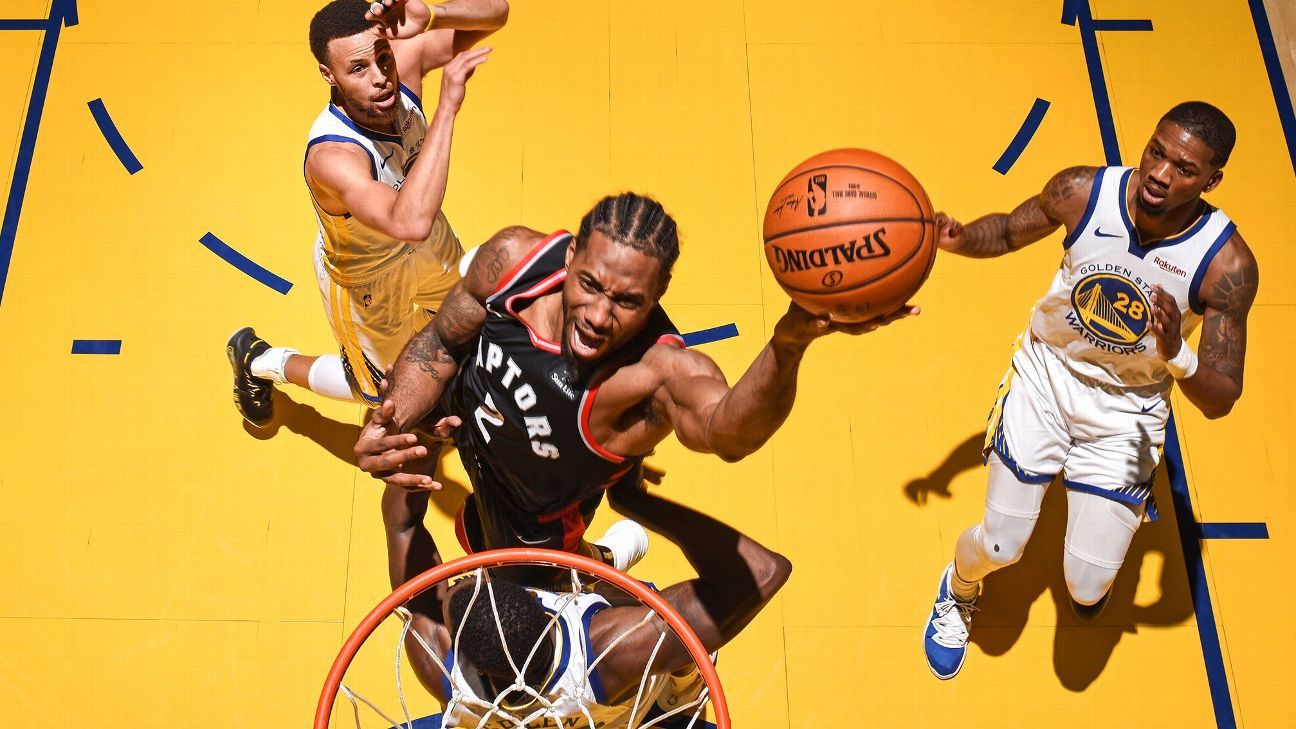
Three games into the 2019 NBA Finals, the two biggest factors in the series are the Golden State Warriors' injuries and the Toronto Raptors' shooting. While the Warriors are trying to win their third straight title with a depleted group of banged-up superstars, the Raptors' shooting numbers have toggled between incredible and awful.
It's a mixed-up series on basketball's biggest stage, and late word from Oakland is that Klay Thompson will play Friday night, but Kevin Durant will miss Game 4 at Oracle Arena (9 p.m. ET on ABC), while Kevon Looney is officially listed as questionable. Thompson's reappearance is good news for a team that desperately needs to shore up its perimeter defense, which has been uncharacteristically bad so far in this series.
The Dubs need to find ways to slow down a Toronto team that has scored at least 118 points twice, while Golden State has scored 109 points in each of the first three games.
With Looney, Thompson and Durant out, the Raptors needed to win Game 3, and they did so by taking advantage of Golden State's poor defense and putting on a clinic in shooting efficiency. Toronto became just the third team in Finals history to shoot 50% from the field, 40% from 3 and 90% from the free throw line, joining the 2017 Warriors and the 1986 Boston Celtics. The entire Raptors squad was red-hot -- every player who attempted a bucket for Toronto shot at least 50% from the field.
The Raps ended the night with an astronomical effective field goal percentage (eFG) of 62.8. How good is that? When a team has an eFG that high, it's almost certainly going to win:
Since 1984, playoff teams with an eFG between 62 and 63 are 42-4.
In the Finals, teams that log an eFG of 62 or more are 14-0.
Toronto's shooting also was terrific in the Game 1 win, with a 59.1 eFG. Since 1984, playoff teams with an eFG between 59 and 60 are 72-17. If the Raptors sink jumpers the way they did in Games 1 and 3, it might not matter who does and doesn't play for Golden State.
The Warriors have logged 109 playoff games since 2014. Their overall record is a cool 70-39, but even this team's success depends a lot on how well its opponents shoot the ball. Since 2014, Warriors playoff opponents have logged an eFG over 59 in just 12 of those 109 games -- 11 of which were Warriors losses. Toronto has done it twice already. If the Warriors had been giving up this many clean looks on defense since 2014, they wouldn't be a dynasty.
It's unlikely this is purely shooting luck on the Raptors' end. Given both the shot quality and the shooter, Toronto had an expected eFG of 53.4% on 3s in the regular season, per Second Spectrum tracking. That has bumped up to 54.3% in the playoffs and 55.3% against the Warriors. The Raptors outperformed their shot quality in their two wins, but they are creating legitimately good opportunities.
As much as Thompson and Durant help on offense, their talents and experience are just as vital on the other end. The Warriors' dynasty will rightfully go down as one of the best perimeter offenses the world has ever seen, but this group owes just as much of its success to dominant perimeter defense. Here's a troubling couplet:
When the Warriors won their first title in 2015, they had the best defense in that postseason in part because they shut down the 3-point line, holding opponents to 6.8 made 3s per game (second best of 16 playoff teams) on just 30.4% shooting from beyond the arc (best such mark that year).
In the 2019 playoffs, the Dubs' defense ranks 10th out of 16 postseason teams in part because it can't stop 3s. The Warriors are allowing 13.5 made 3s (15th out of 16 playoff teams) per game, and their opponents are hitting 36.7% of their triples (11th out of 16 playoff teams).
The absences of Looney, Durant and Thompson have meant more playing time for players such as Jordan Bell, Alfonzo McKinnie, DeMarcus Cousins, Jonas Jerebko and Andrew Bogut. In turn, Golden State's defense has been slower and less competent, especially on the perimeter.
That was on full display in Game 3, as Toronto became the third team in Finals history to drain 17 3-pointers, and many of those triples resulted from poor defensive actions. The Raptors enjoyed 12 uncontested looks from beyond the arc Wednesday, per Second Spectrum tracking. In their previous 108 playoff games, the Warriors had allowed more than 12 uncontested 3s only once (May 1, 2018, against the New Orleans Pelicans).
No player on either team took more than three uncontested 3s in Games 1 and 2. But on Wednesday night, Danny Green launched five of them and Fred VanVleet added four more. As a team, Toronto converted on six of those 12 golden opportunities, producing 18 key points in its 14-point win. Toronto has now made 41 3s in this series. Golden State has made 37.
Green is the bellwether. His 3-point attempts almost always punctuate effective ball-movement sequences -- after all, he made his name playing for San Antonio Spurs teams known for beautiful passing. Over 91% of Green's 3s are assisted. So if Green is getting clean looks like he did in Game 3, it means Toronto's offense is firing on all cylinders and the Warriors' defense is strained.
Thanks to all the injuries, coach Steve Kerr has been using lineups that rarely if ever have played together. That's bad news, especially on the defensive end, where familiarity and communication are prerequisites for the kinds of teamwork needed to execute in tandem.
The Warriors' Game 3 starters of Shaun Livingston, Stephen Curry, Cousins, Andre Iguodala and Draymond Green had a net rating of minus-23.8 in Game 3 in part because these dudes have barely played defense together before -- just 16 regular-season minutes and one in the postseason. The Finals are hard enough. All these injuries are forcing the Warriors into lineups that have hardly played against anyone before, let alone the best team from the Eastern Conference.
It's a make-or-miss league, and in the Raptors' two wins so far, they've been doing a whole lot of making. But the series is still young. If Thompson and his team can rediscover their defensive identity in Game 4, not only will they force Toronto to miss more shots, they'll also climb their way right back into this series.
Tagged under















 Phone: (800) 737. 6040
Phone: (800) 737. 6040 Fax: (800) 825 5558
Fax: (800) 825 5558 Website:
Website:  Email:
Email: 






